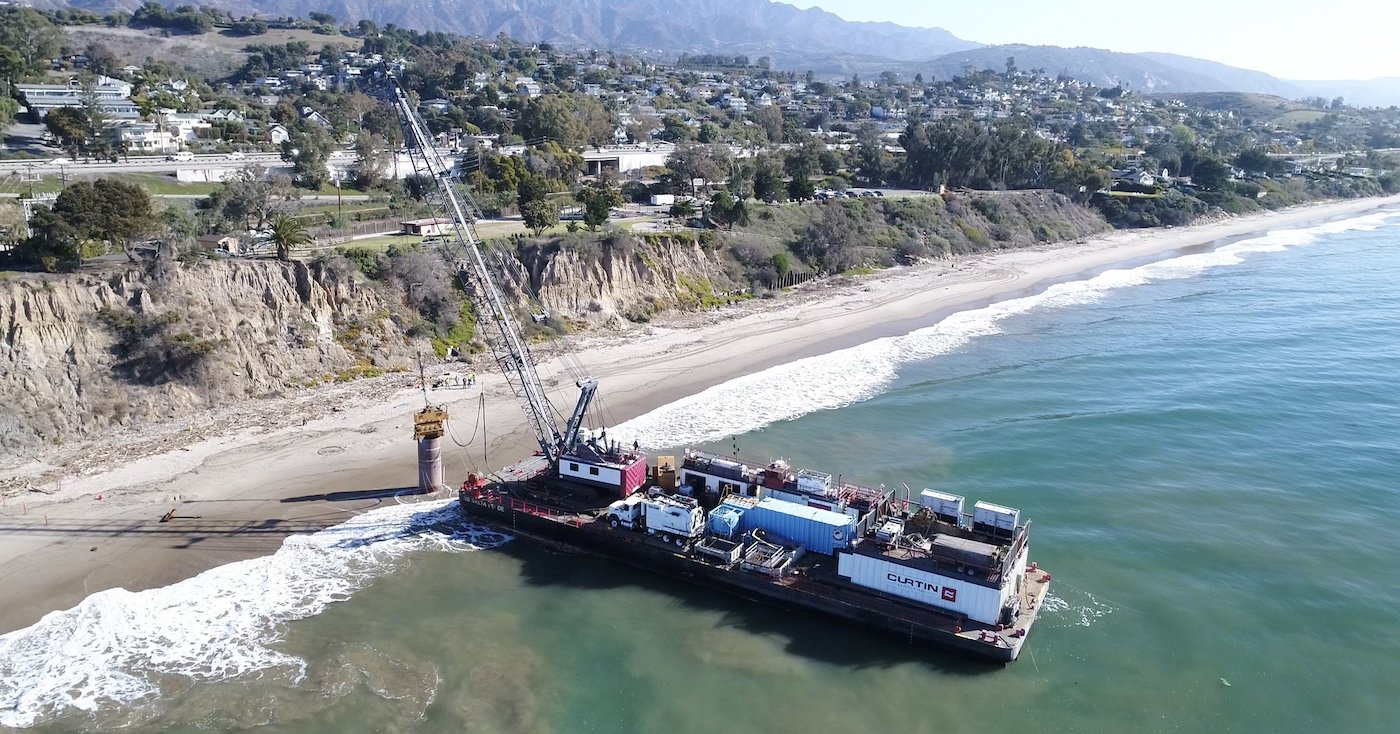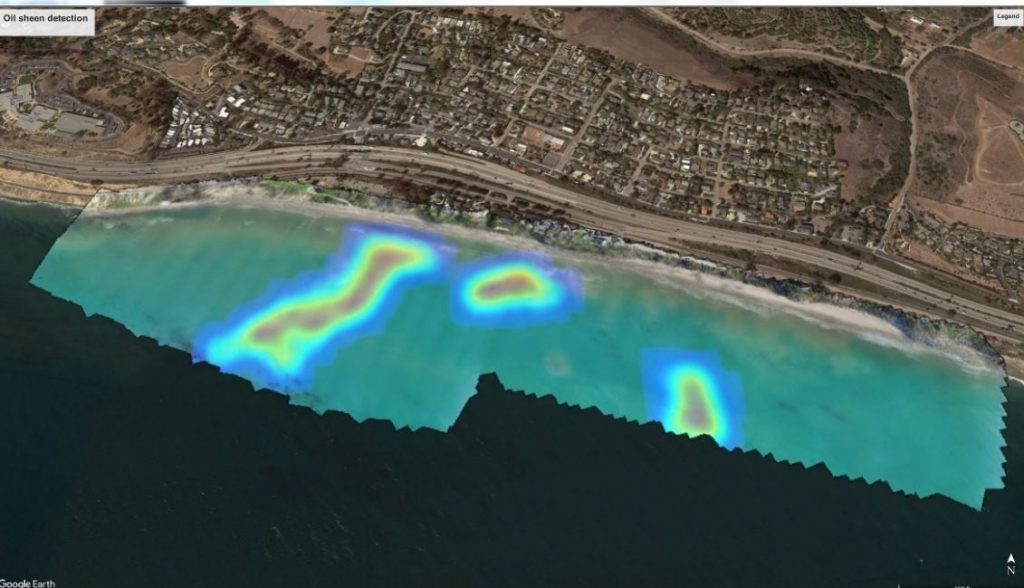Heal the Ocean

Heal the Ocean (HTO) has enjoyed a remarkable record of success, particularly for how the nonprofit that was founded barely more than 20 years ago to address contamination of the waters off Summerland from coastal septic system runoff has turned comparatively smaller donations into big projects. HTO smartly and enviably has leveraged modest sums to fund research, gather data, and then reach influential people and governmental agencies to effect massive accomplishments, often through legislative efforts.
That was how HTO turned a $10,000 investment into a $2 million per year project to cap old oil wells and remove other major environmental hazards along the Central Coast and elsewhere along the state’s shoreline. Just last fall, the HTO-inspired partnership with the State Lands Commission led to the plugging of two more leaking oil wells, Treadwell and NorthStar, with two more such projects planned for the remainder of 2021.
“Treadwell was a real stinker and NorthStar was another bad one coming up on the beach,” said Hillary Hauser, HTO’s founder and executive director who spearheaded the septic system-into-sewers project after finding out that surfers at Rincon were getting sick at strange rates. “We’re still monitoring that area with a drone, but I’m glad I can go down there often now, because I used to live in Summerland and the smell was so awful I never went to that beach.”
After capping “the big one,” Hauser and Heal the Ocean aren’t letting down their guard, as some of the oil well’s tentacles are still “misbehaving,” she said. “We may be able to move fast and get the one that’s causing some issues, get the plan designed and up and running before the fiscal year ends in June. We want to get as much of that (state) money as we can into Summerland.”
Springing into Action
But all that was documented in the Montecito Journal’s initial Giving List book that came out in November, shortly after Treadwell was topped off. But HTO is not too proud to take on much smaller issues, such as its Doggy Bag Program, which began in 2010 when the organization learned that bag dispensers for people to pick up their pooches’ poop would no longer be stocked by Santa Barbara County due to a sweeping budget cut. Heal the Ocean established a partnership with the County agreeing to help raise funds to restock the dispensers with compostable dog bags at beaches and parks from Rincon to Goleta, smartly augmenting the budget by offering advertising sponsorships.
Springing into immediate action to protect local waters from what might appear to be minor nuisances is still one of HTO’s priorities, as the organization maintains the flexibility and nimbleness to neutralize threats as they arise whether or not they require legislation or leveraging local leaders.
Recently, that meant managing the removal of detritus from a medium-sized boat that had crashed into the shoreline below the Santa Barbara Cemetery. Reports from residents of tabletops, wood pieces, cushions, and other items from the vessel were threatening the surf line and potentially polluting the waters as well as creating a safety hazard onshore.

Heal the Ocean funded the cleanup by Marborg Industries.
“We started making a call to the County and Public Works asking what they were going to do about it. How do we get this cleaned up?” Hauser recalled. “Then I just said, ‘You know what? I haven’t got time for this.’ I just decided to call Marborg and see if I could pay them $5,000 to take care of it. It was very fast, but we wouldn’t be able to do that without having the financial support that we do.”
Just this past January, Heal the Ocean advisory board member Harry Rabin learned of an abandoned homeless encampment near Montecito’s Butterfly Beach and alerted Hauser that unusually high tides due in a few days might sweep all the abandoned items into the sea. Even though it was a Saturday, the pair pounced on the situation, with Rabin contacting County officials to certify the camp was officially abandoned in order to gain approval to clear the site, while Hauser worked on finding a cleaning crew or hauler that could cart away the items before the King Tide hit two days later.
“We couldn’t get Borgatello on such short notice because half his crews were quarantining from being exposed to COVID,” Hauser explained. “So we got a crew from BigGreen Cleaning Co. to show up at five o’clock at night, 10 workers with bags and trucks, to get the stuff out of there before sundown. That was $3,000, but I was able to just right then pay for cleanup and get it done rather than going around in circles and kicking and moaning about it.”
Responding creatively to emergency projects to keep detritus out of the ocean takes a very different point of view, and a hands-on attitude. But that’s something Hauser harbors close to her heart.
Such was the case with finding an alternative for the families of convicts housed at the State Prison in Lompoc who wanted to show the inmates that people on the outside are aware of the dire situation inside the walls, where the close confines had resulted in massive outbreaks of COVID infection. When HTO heard that a group of wives were going to top off their demonstration outside the prison by releasing a number of helium-filled balloons, Hauser imagined all those deflated pieces of rubber, latex, and strings drifting out over the ocean and affecting the wildlife there and on land, and hopped into action once again.
“We called up the organizers to talk about how to fix the problem while still letting the family members meet their mission,” she said. “Because our M.O. is, if you want to change something, come up with a solution. Don’t just go in there and say, ‘No, you can’t do that.’ What we came up with was hiring a skywriter to go up in an airplane with a banner saying, ‘We love you guys, we’re here for you.’ That cost about $3,000, which again is only possible because of donations. But we needed fast action to keep balloons out of the ocean.”
Hauser wouldn’t mind if such quick action weren’t always necessary. Once the pandemic passes, she said, she’s hoping that local people and those around the world will have appreciated how things have slowed down and the recent changes to the environment as a result.
“I just hope that when we start that up again, that we can go slowly. Like with a recipe where you add one thing at a time and not just throw all the cars back out on the freeway and all the airplanes into the sky. And don’t even get me started on the cruise ships.”
But she knows that HTO won’t be able to rest on its laurels anytime soon.
“When it comes to the area of the ocean or the environment, there will never be a time when you don’t have anything to do. It just accelerates. It comes at you all the time. Our job is to always be vigilant, and when you see something, when it comes to your doorstep, to figure out how you’re going to come up with a solution. There really is no other choice.”







You must be logged in to post a comment.